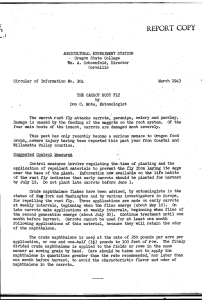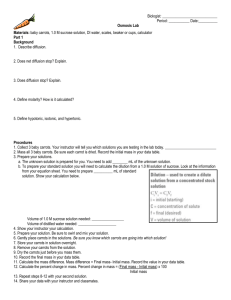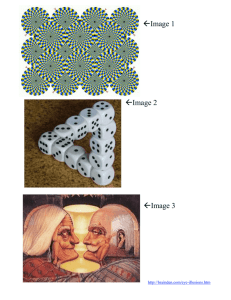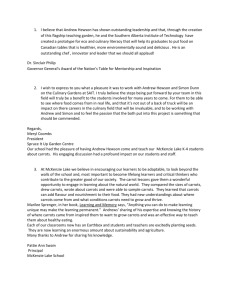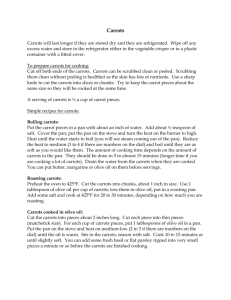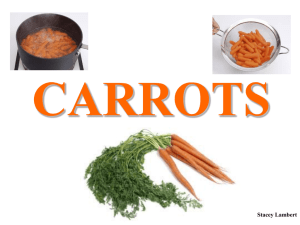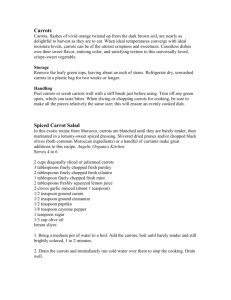Carrots – nutritional, cooking and storage
advertisement
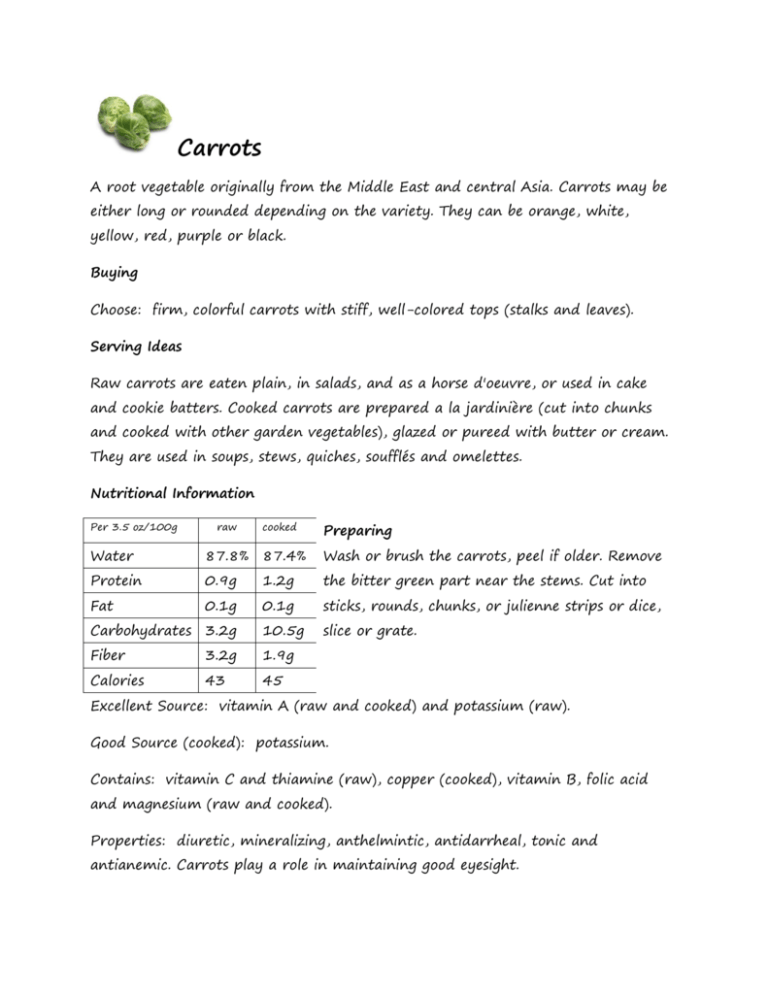
Carrots A root vegetable originally from the Middle East and central Asia. Carrots may be either long or rounded depending on the variety. They can be orange, white, yellow, red, purple or black. Buying Choose: firm, colorful carrots with stiff, well-colored tops (stalks and leaves). Serving Ideas Raw carrots are eaten plain, in salads, and as a horse d'oeuvre, or used in cake and cookie batters. Cooked carrots are prepared a la jardinière (cut into chunks and cooked with other garden vegetables), glazed or pureed with butter or cream. They are used in soups, stews, quiches, soufflés and omelettes. Nutritional Information Per 3.5 oz/100g raw cooked Preparing Water 87.8% 87.4% Wash or brush the carrots, peel if older. Remove Protein 0.9g 1.2g the bitter green part near the stems. Cut into Fat 0.1g 0.1g sticks, rounds, chunks, or julienne strips or dice, Carbohydrates 3.2g 10.5g slice or grate. Fiber 3.2g 1.9g Calories 43 45 Excellent Source: vitamin A (raw and cooked) and potassium (raw). Good Source (cooked): potassium. Contains: vitamin C and thiamine (raw), copper (cooked), vitamin B, folic acid and magnesium (raw and cooked). Properties: diuretic, mineralizing, anthelmintic, antidarrheal, tonic and antianemic. Carrots play a role in maintaining good eyesight. Storing At room temperature: place carrots in a dark, cool, humid, and well-ventilated environment. Do not store carrots near vegetables that emit a lot of ethylene gas, such as pears, apples or potatoes (which speeds up ripening). In the fridge: 1-3 weeks, in a loosely closed or perforated plastic bag. In the freezer: 1 year. Blanch whole carrots 5 min. or cut carrots 3 min.


